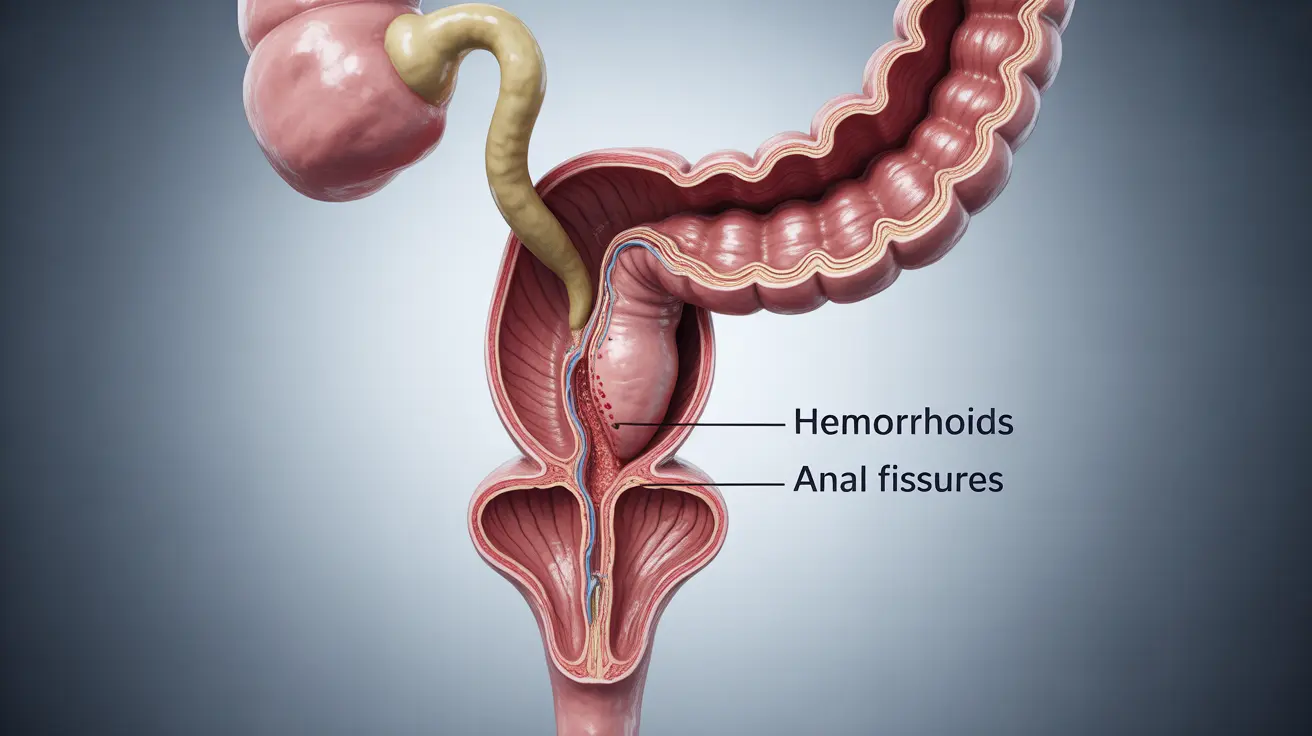Experiencing bright red anal bleeding can be alarming, but understanding its causes and knowing when to seek medical attention is crucial for proper care. This common symptom can range from minor issues that resolve with home treatment to more serious conditions requiring immediate medical intervention.
While many cases of bright red anal bleeding are not life-threatening, it's important to identify the underlying cause and determine appropriate treatment options. This comprehensive guide will help you understand the various causes, treatment approaches, and warning signs that indicate when professional medical care is necessary.
Common Causes of Bright Red Anal Bleeding
Bright red anal bleeding typically occurs due to several common conditions affecting the lower digestive tract:
Hemorrhoids
The most frequent cause of bright red anal bleeding is hemorrhoids, which are swollen blood vessels in the anal area. These can become irritated during bowel movements, leading to bleeding when wiping.
Anal Fissures
These small tears in the anal tissue commonly occur due to passing hard stools or straining during bowel movements. They can cause sharp pain and bright red bleeding during defecation.
Other Common Causes
- Constipation and hard stools
- Diarrhea
- Anal inflammation
- Excessive wiping or harsh cleaning
Warning Signs and Risk Factors
While many cases of bright red anal bleeding are benign, certain symptoms warrant immediate medical attention:
- Heavy or continuous bleeding
- Severe abdominal or anal pain
- Dizziness or weakness
- Fever
- Black or very dark stools
- Unexpected weight loss
Treatment Options and Home Care
Many cases of bright red anal bleeding can be managed with appropriate home care measures:
Immediate Care
- Clean the area gently with warm water
- Apply cold compresses to reduce swelling
- Use over-the-counter hemorrhoid treatments
- Take warm sitz baths
Lifestyle Changes
Long-term management often involves making dietary and lifestyle modifications:
- Increase fiber intake
- Stay well-hydrated
- Avoid straining during bowel movements
- Exercise regularly
- Maintain good anal hygiene
Prevention Strategies
Preventing bright red anal bleeding involves several key practices:
- Maintain a high-fiber diet
- Exercise regularly
- Practice proper bathroom habits
- Avoid prolonged sitting
- Address constipation promptly
Frequently Asked Questions
What causes bright red blood after wiping, and when should I be worried?
Bright red blood after wiping is most commonly caused by hemorrhoids or anal fissures. While usually not serious, you should be concerned if bleeding is heavy, persistent, or accompanied by severe pain, fever, or unexplained weight loss.
How can I tell if my anal bleeding is from hemorrhoids or an anal fissure?
Hemorrhoids typically cause painless bleeding and may be felt as soft lumps around the anus. Anal fissures, on the other hand, usually cause sharp pain during bowel movements and may feel like a small tear or cut.
What are the best home treatments for bright red anal bleeding?
Effective home treatments include warm sitz baths, gentle cleaning, cold compresses for comfort, and over-the-counter hemorrhoid treatments. Increasing fiber intake and staying hydrated can help prevent future episodes.
Should I see a doctor for bright red blood in my stool, and what tests might they do?
Consult a doctor if bleeding persists, is heavy, or accompanies concerning symptoms. They may perform a physical exam, digital rectal examination, or recommend procedures like anoscopy or colonoscopy depending on your symptoms and risk factors.
How can I prevent or reduce the risk of getting bright red anal bleeding in the future?
Prevention strategies include maintaining a fiber-rich diet, staying hydrated, exercising regularly, avoiding straining during bowel movements, and practicing good bathroom hygiene. Address constipation promptly and avoid sitting for prolonged periods.




